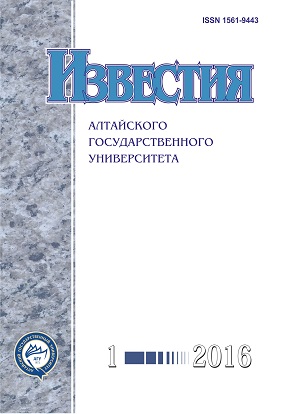Methods of Surface-Tension Experimental Evaluation
Abstract
There are two methods of liquids surface-tension evaluation: the plate detachment method and the balanceddrop method. These methods are performed with an experimental installation that allows to slide plates with an accuracy up to 0,01 mm. An amount of 0,05–0,2 ml of liquid is poured between the plates so that the drop contacts both plates. Then the drop was stretched up to its rupture or till upper and lower surfaces of the drop become equally round. The drop profile is studied with the USBmicroscope, and pictures of the analyzed liquid drop area taken to evaluate the wetting angle. Distil water, glycerin, ethanol, and GK transformer oil are used as experimental liquids. The values of liquids surface-tension obtained in experiments correspond well with the reference data. These methods demonstrate the following advantages: simplicity of preparation, quickness, and little amount of liquids.
DOI 10.14258/izvasu(2016)1-15
Downloads
Metrics
References
Кононенко В.И., Семенищев А.М., Добряк В.А., Торокин В.В., Сон Л.Д., Конюкова А.В., Попель П.С., Мозговой А.Г. Автоматизированный метод измерения плотности и поверхностного натяжения металлических расплавов//Перспективные материалы. -2007. -№ 2.
Речкалов В.Г., Ушаков В.Л., Пызин Г.П., Бескачко В.П. Компьютерная обработка изображения в методе определения коэффициента поверхностного натяжения жидкости по форме поверхности капли//Вестник Южно-Уральского гос. ун-та. Серия: Математика. Механика. Физика. -2010. -№ 30 (206).
Пономарева М.А., Якутенок В.А. Способ определения коэффициента поверхностного натяжения и угла смачивания по изображению капли//Вестник ННГУ. -2011. -№ 4 (3).
Pierre-Marie Gassin Mesure de la tension superficielle par la technique de la goutte pendante//Le Bulletin de l'union des physiciens. -2014. -V. 108. -№ 963.
Nikolay Tankovsky, Nikolay Zografov Oscillations of a Hanging Liquid Drop, Driven by Interfacial Dielectric Force//Zeitschrift für Physikalische Chemie. -2011. -№ 225 (4) DOI: 10.1524/zpch.2011.0074
Речкалов В. Г., Бескачко В. П. Моделирование экспериментов по измерению поверхностного натяжения по форме поверхности капли при наличии несовершенств в ее подвесе или опоре//Вестник Южно-Уральского гос. ун-та. Серия: Математика. Механика. Физика. -2013. -№ 1.
Сумм Б.Д. Гистерезис смачивания//Соросовский образовательный журнал. -1999. -№ 7.
Волков В.И., Лескова С.С., Кирколуп Е.Р. Экспериментальное исследование гистерезиса смачивания с помощью плоского капилляра//Вестник уральской медицинской академической науки. -2006. -№ 2 (12).
Волков В.И., Лескова С.С., Кирколуп Е.Р. Экспериментальное исследование гистерезиса смачивания//Известия Алтайского гос. ун-та. -2006. -№ 1 (49).
Краткий справочник физико-химических величин/под ред. А.А. Равделя и А.М. Пономаревой. -СПб., 2003.
Ионова И.В. Физико-химический анализ многокомпонентных углеводородных систем: автореф. дисс.. канд. хим. наук. -Казань, 2006.
Izvestiya of Altai State University is a golden publisher, as we allow self-archiving, but most importantly we are fully transparent about your rights.
Authors may present and discuss their findings ahead of publication: at biological or scientific conferences, on preprint servers, in public databases, and in blogs, wikis, tweets, and other informal communication channels.
Izvestiya of Altai State University allows authors to deposit manuscripts (currently under review or those for intended submission to Izvestiya of Altai State University) in non-commercial, pre-print servers such as ArXiv.
Authors who publish with this journal agree to the following terms:
- Authors retain copyright and grant the journal right of first publication with the work simultaneously licensed under a Creative Commons Attribution License (CC BY 4.0) that allows others to share the work with an acknowledgement of the work's authorship and initial publication in this journal.
- Authors are able to enter into separate, additional contractual arrangements for the non-exclusive distribution of the journal's published version of the work (e.g., post it to an institutional repository or publish it in a book), with an acknowledgement of its initial publication in this journal.
- Authors are permitted and encouraged to post their work online (e.g., in institutional repositories or on their website) prior to and during the submission process, as it can lead to productive exchanges, as well as earlier and greater citation of published work (See The Effect of Open Access).








